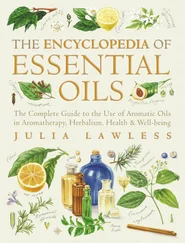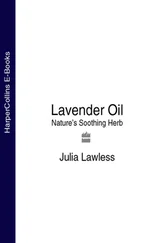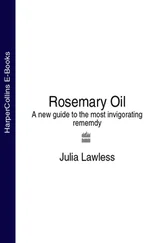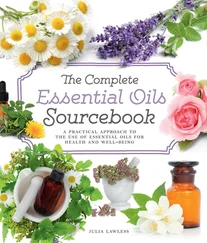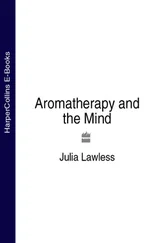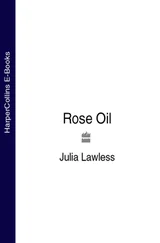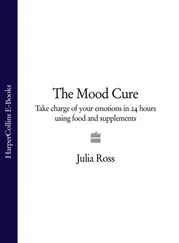Julia Lawless and Judith Allan
Hampstead, October 1999
THE PLANT OF IMMORTALITY
Introduction:
The Aloe is a medicine recommended by the most respected tradition, it is used and affirmed by the experience of all doctors of all ages.
Dictionnaire Encyclopédique des Sciences Médicales, Masson et Fils, Paris, 1865
The use of Aloe vera will be the most important single step forward in the treatment of diseases in the history of mankind.
Dr McDaniel MD, Chief of Pathology, Dallas-Fort Worth Medical Center, Texas
Aloe vera is a remarkable plant … one of a handful of traditional folk remedies renowned since ancient times as a ‘cure all’. It has been called by such evocative names as ‘Wand of Heaven’, ‘Miracle Worker’ and ‘Silent Healer’, while the ancient Egyptians referred to it as ‘The Plant of Immortality’. Indeed, one of the most outstanding qualities of Aloe vera is the versatile nature of its healing properties. Although it is best known today simply as a cosmetic ingredient, modern research is confirming the value of Aloe vera in the treatment of numerous disorders. These range from common complaints such as acne, eczema, indigestion and psoriasis to more serious medical conditions such as arthritis, ulcers, radiation burns, irritable bowel syndrome and even AIDS and cancer.
Aloe vera resembles a cactus with its characteristic spiky, fleshy leaves. In fact it is a perennial succulent belonging to the Aloaceae family. There are around 350 varieties of the Aloe plant, but the one with the best-known medicinal qualities is simply called Aloe vera , meaning the ‘true aloe’. There are also four or five other varieties which are commonly used in healing.
The distinctive appearance of the Aloe vera plant is depicted on Egyptian temple friezes as early as 4000 BC, while its first recorded therapeutic use has been traced to a Sumerian clay tablet dated at around 2000 BC.
Although the medical versatility of the plant was known to early civilizations, and its usage documented by such prominent physicians as Dioscorides, Pliny the Elder and Galen, it was only early in the 20th century that its healing potential began to be re-assessed in the light of newly emerging scientific evidence. During the 1930s, in the pioneering days of x-ray treatment, it was found that Aloe vera juice could bring prompt healing to burns caused by radiation. When all other remedies failed, it also brought relief to victims of Hiroshima and Nagasaki who were severely burned.
Its more general usage was made possible in the late 1940s when a method to stop the oxidation and deterioration of the active ingredients in the plant was discovered. Subsequent tests confirmed that pain and scarring caused by burns and wounds was greatly reduced, if not entirely eradicated, due to a ‘wound hormone’ 1contained in Aloe vera . Nowadays, Aloe vera extracts are used extensively in burn ointments, suntan lotions and skin care products.
During the 1980s and 1990s, further clinical studies have demonstrated that, apart from its cosmetic and skin care applications, Aloe vera promotes rapid healing and is also very effective as a natural painkiller, antibiotic, anti-inflammatory, immuno-stimulant and general antiseptic agent.
Some remarkable case histories and personal experiences of the benefits of Aloe vera can be found among people from all walks of life … such accounts speak volumes about the healing capacity of this extraordinary plant.
Mahatma Gandhi drank Aloe vera juice every day. In a letter to his biographer, Romain Rolland, Gandhi wrote:
You ask me what were the secret forces that sustained me during my long fasts. Well, it was my unshakeable faith in God, my simple and frugal lifestyle, and the Aloe whose benefits I discovered upon my arrival in South Africa at the end of the 19th century.
In 1995, Lady Elizabeth Anson, cousin to Queen Elizabeth II and an inveterate party-giver, revealed that it was Aloe vera which had given her a new lease of life after suffering from the debilitating effects of ME for many years. She has set up a charity for ME sufferers which recommends Aloe, among other natural treatments, to fellow sufferers.
Princess Helena Moutafian MBE, Dame of the Order of St John and a well-known humanitarian, uses Aloe vera daily. She uses the juice for eczema on her hands and face and takes Aloe vera capsules internally for bowel irritation and any kind of infection. In her view:
…Aloe is one of the best things that God created.
Dr David Smallbone, MB, CHB, LRCP, MRCS, MFHOM, FCOH, is a doctor and surgeon who has been in private practice in Britain since the late 1970s. He has not written a prescription for the last 10 to 15 years and now uses virtually no allopathic medicine. He treats his patients with a variety of natural methods such as herbal medicine and homoeopathy. Regarding Aloe vera he says:
I have used Aloe vera in my practice over the years whenever I feel it to be necessary … it is such a wonderful plant.
Stephen Turoff, one of the most gifted healers in Britain today, recommends Aloe as a general tonic and says that it is especially valuable in treating digestive disorders. In his view:
Aloe vera is good for everything…
Botanical, Historical and Cultural Origins
PART ONE
The Aloe Vera Family Tree
ALOE VERA
Most sources place Aloe in the Lily family ( Liliaceae ). Until recently this was correct, but according to Dr Tom Reynolds of the Jodrell Laboratory, Kew Gardens, London, it has now been designated its own family, known as Aloaceae . Nonetheless, it is related to the lily family and to plants such as garlic, onion and asparagus, all of which are known to have medicinal properties.
The Royal Horticultural Society Gardeners’ Encylopaedia of Plants and Flowers defines Aloe as:
[A] Genus of evergreen, rosetted trees, shrubs, perennials and scandent climbers with succulent foliage and tubular to bell-shaped flowers. 1
There are about 350 varieties of Aloe in the Aloaceae family. In South Africa alone, 132 species were recorded in 1955! They range from miniature aloes like Aloe aristata and Aloe brevifolia to small aloes such as Aloe striata , which is one of the prettiest of the species. Its leaves are pale green edged with light coral red and sometimes flushed with pink. The flowers are orange or pinky-red and roughly resemble a mass of coral. The flowers of different aloes vary in colour from cream or orange to scarlet, rose flame or spectacular autumn tints.
Among the large aloes are Aloe arborescens and Aloe ferox , both used for healing purposes. In the 19th century, James Backhouse, in A Narrative of a Visit to Mauritius and South Africa , refers to Aloe arborescens as a Tree-Aloe, otherwise known as ‘Kokerboom’ in the Afrikaans language. ‘Kokerboom’ means Quiver Tree, as it was used by the Bushmen to make quivers from its branches. Members of the Aloaceae family known for their medicinal properties include:
 Aloe arborescens , which is used in Japan and has been cultivated mainly in Russia and the Far East. It has long slender blue-green leaves with toothed edges, and cream stripes. It produces numerous spikes of red flowers in late winter and spring, and grows to a height of 1.8 m (6 ft) high.
Aloe arborescens , which is used in Japan and has been cultivated mainly in Russia and the Far East. It has long slender blue-green leaves with toothed edges, and cream stripes. It produces numerous spikes of red flowers in late winter and spring, and grows to a height of 1.8 m (6 ft) high.
Читать дальше
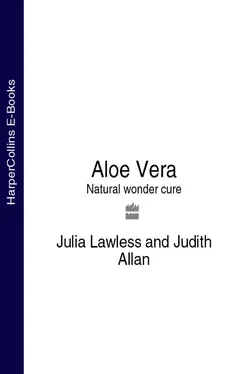
 Aloe arborescens , which is used in Japan and has been cultivated mainly in Russia and the Far East. It has long slender blue-green leaves with toothed edges, and cream stripes. It produces numerous spikes of red flowers in late winter and spring, and grows to a height of 1.8 m (6 ft) high.
Aloe arborescens , which is used in Japan and has been cultivated mainly in Russia and the Far East. It has long slender blue-green leaves with toothed edges, and cream stripes. It produces numerous spikes of red flowers in late winter and spring, and grows to a height of 1.8 m (6 ft) high.


